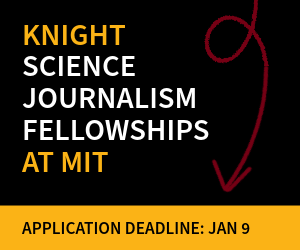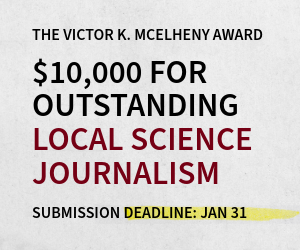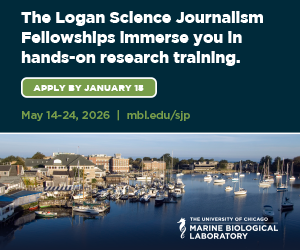The World Federation of Science Journalists (WFSJ) has announced that the National Association of Science Writers (NASW), in partnership with the Council for the Advancement of Science Writing (CASW), will host the 10th World Conference of Science Journalists, in San Francisco, in fall 2017, marking the first time WCSJ will take place in the United States.
Science writing news
The Akha hill tribe of Northern Thailand once raised poppies for opium. With financial support and technical advice from two entrepreneurs, one Thai, one Canadian, the tribe now grows high quality organic Arabica coffee. As Mark Pendergrast describes in Beyond Fair Trade: How One Small Coffee Company Helped Transform a Hillside Village in Thailand, the coffee’s success has improved the community’s health, education, and, often, quality of life. At the same time, television, computers, and other aspects of modern life also have altered the community’s cultural landscape.
NASW member Elizabeth DeVita-Raeburn teamed up with her father, Vincent T. DeVita, M.D., a former director of the National Cancer Institute, to provide an insider’s perspective on decades of cancer research. In The Death of Cancer, they call for changes in delivery of cancer treatment in the U.S. Optimal care of people with cancer, they say, requires better-informed and less timid physicians, refocused national agendas, and fewer bureaucratic hurdles.
Science and journalism can change the world — or at least make an impact on it. On April 1, award-winning National Public Radio science reporter Richard Harris delivered that message at Virginia Tech's College of Engineering with the presentation “Using the tools of science and journalism to make a difference.”
The 2012 discovery of the Higgs boson put finishing touches on the so-called “Standard Model” of particle physics. In From the Great Wall to the Great Collider: China and the Quest to Uncover the Inner Workings of the Universe, Harvard mathematician Shing-Tung Yau and NASW member Steve Nadis describe plans to build a giant accelerator in China.
Readers eager to learn more about Ebola and its West Africa outbreak will find that information in the timely publication of the second edition of Carl Zimmer’s A Planet of Viruses. Zimmer also reports on the emergence of MERS, and provides updates on the influenzas, smallpox, and HIV.
On March 10, at a massive sound stage here in the heart of Los Angeles, Alex Trebek stared down three contestants on the game show "Jeopardy!" The legendary host has presided over the TV show for 31 years, and that day he read off the following clue, which also appeared on a blue screen behind him: This condition has doubled in the last 30 years in U.S. kids & is linked to increased risk for diabetes.
In Heal: The Vital Role of Dogs in the Search for Cancer Cures, Arlene Weintraub describes promising collaborative research on cancers that are similar in dogs and humans, including gastric cancer, lymphoma, osteosarcoma, breast cancer, and melanoma. Benefits from this research, Weintraub reports, include new medications benefiting both people and pets. Spurred by the death of her sister, Beth, from gastric cancer at age 47, Weintraub visited eight universities and interviewed veterinarians, oncologists and other scientists, as well as drug company executives, pet owners, and others.
When you decide it’s time to write your will or update it, it’s also time to prepare a “letter of instructions.” Ignore the legalese. The letter is an informal document that spells out where you keep important personal papers and what your assets are, among other things.



